
Matthew Gregory Lewis was an English novelist and dramatist, whose writings are often classified as "Gothic horror". He was frequently referred to as "Monk" Lewis, because of the success of his 1796 Gothic novel The Monk. He also worked as a diplomat, politician and an estate owner in Jamaica.
The Old American Company was an American theatre company. It was the first fully professional theatre company to perform in North America. It also played a vital role in the theatre history of Jamaica. It was founded in 1752 and disbanded in 1805. It was known as the Hallam Company (1752–1758), the American Company (1758–1785) and the Old American Company (1785–1805). With a few temporary exceptions, the Company enjoyed a de facto monopoly of professional theatre in the United States until 1790.

The equestrian theatre company of Pépin and Breschard, American Victor Pépin and Frenchman Jean Baptiste Casmiere Breschard, arrived in the United States of America from Madrid, Spain, in November 1807. They toured that new country until 1815. From their arrival until the present day, what is now known as the traditional circus has had a presence in North America.
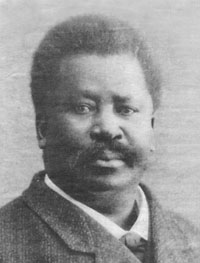
Pablo Fanque was a British equestrian performer and circus proprietor, becoming the first recorded Black circus owner in Britain. His circus was popular in Victorian Britain for 30 years, a period that is regarded as the golden age of the circus.

Julia Kathleen Nancy McKenzie is an English actress, singer, presenter, and theatre director. She has premièred leading roles written by both Alan Ayckbourn and Stephen Sondheim. On television, she is known for her BAFTA Award nominated role as Hester Fields in the sitcom Fresh Fields (1984–1986) and its sequel French Fields (1989–1991), and as Miss Marple in Agatha Christie's Marple (2009–2013).

The Surrey Theatre, London began life in 1782 as the Royal Circus and Equestrian Philharmonic Academy, one of the many circuses that provided entertainment of both horsemanship and drama (hippodrama). It stood in Blackfriars Road, near the junction with Westminster Bridge Road, just south of the River Thames in what is now the London Borough of Southwark.
Henry M. Milner was a 19th-century British playwright and author of melodramas and popular tragedies. Milner wrote numerous plays, including two popular equestrian dramas/hippodramas featuring live horses on stage. These are: Mazeppa; or, the Wild Horse of Tartary, which kicked off a wave of interest in the legend and Dick Turpin's Ride to York; or, Bonny black Bess, about the famous highwayman and his horse. Both of these plays included great spectacle in performance and enjoyed great popular success during the mid to late nineteenth century. ' 'Mazeppa' ' was extremely popular and often produced; it is recalled as one of, if not the most, significant and popular equestrian drama of all time.

Lafayette Circus Theatre emerged in Manhattan in 1825 as an equestrian circus arena; in 1826–1827 it was rebuilt into a conventional theatre hall with an orchestra pit and advanced rigging. It boasted equipment for both equestrian (Hippodrama) and aquatic drama. The theatre was destroyed by fire in 1829.

Hippodrama, horse drama, or equestrian drama is a genre of theatrical show blending circus horsemanship display with popular melodrama theatre.

Henry Erskine Johnston (1777–1830?) was a Scottish actor.

George Patrick Huntley, always billed as G. P. Huntley, was an Irish actor, known for comic performances in the theatre and the music halls.

The Broadway Theatre, called the Old Broadway Theatre since its demise, was at 326–30 Broadway, between Pearl and Anthony Streets in Lower Manhattan, New York City. With over 4000 seats, it was the largest theater ever built in New York when it opened. During its brief existence, many prominent performers of the era appeared on its stage. It presented plays, opera, ballet, hippodrama, and circus performances in a space that was reconfigured several times. The operators always struggled to make money, however, and after twelve years the Broadway Theatre was replaced by a more profitable building, for the textile trade.
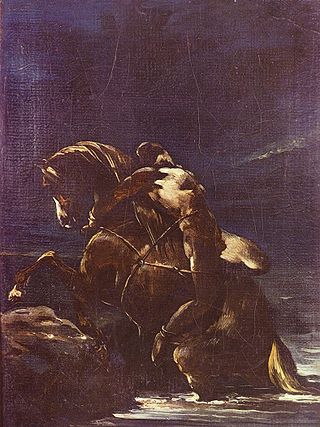
Ivan Mazepa (1639–1709) was a significant figure in the history of Ukraine. One story about him says that as a young man, he was caught in flagrante with a noblewoman, whose husband punished him by tying him naked to a wild horse and setting them free; eventually he reached the Cossacks and became their military leader. This legend caught the attention of the English poet Lord Byron, whose Mazeppa (1819) brought the events to wider attention. His narrative poem inspired many paintings, particularly by French Romantics, which in turn stimulated musical compositions, stage plays, more poems, and so on. New life was breathed into the equestrian tale when it was transposed to the American Wild West. With the independence of Ukraine in 1991, the figure of Mazepa is once again on the international stage.
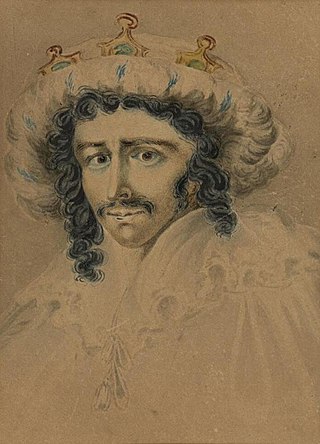
The Anthony Street Theatre was an early New York City theatre which operated intermittently from 1812 to 1821. It opened as the Olympic Theatre in May 1812 and had multiple names during its brief existence.
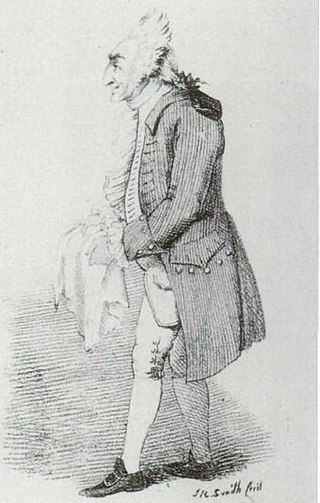
William Twaits was a British singer, dancer and actor-manager whose career was mostly in the United States in the early 19th-century.
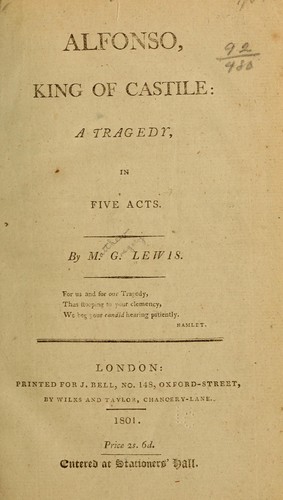
Alfonso, King of Castile is a historical tragedy by the English writer Matthew Lewis. It was published in November 1801, and was first staged at the Theatre Royal, Covent Garden the following year. It is set during the reign of Alfonso XI of Castile during the fourteenth century.
George Benjamin William Lewis commonly referred to as G. B. W. Lewis, or G. B. Lewis, was an English circus performer, later a circus and theatre entrepreneur in Australia.
The Secret Mine: An Equestrian Melo-Drama, in Two Acts is an 1812 equestrian play by Thomas John Dibdin and John Fawcett.

Nannette Johnston was a British stage actress and dancer active during the Regency era. She was born in London as the daughter the actor William Parker, but educated in Edinburgh where her father was working and began her career as a dancer. In 1796 she married the actor Henry Erskine Johnston, with whom she had six children, and the then went to Dublin for a season before heading to London where she acted at Covent Garden and the Haymarket. They both moved to Drury Lane for two seasons, before returning to Covent Garden.

John Bull is an 1803 comedy play by the British writer George Colman the Younger. It premiered at the Theatre Royal, Covent Garden on 5 March 1803. The original cast included George Frederick Cooke as Peregrine, Henry Erskine Johnston as Frank Rochdale, Charles Klanert as Williams, John Waddy as Lord Fitz-Balaam, William Thomas Lewis as Honourable Tom Shuffleton, John Henry Johnstone as Dennis Brulgruddery, John Fawcett as Job Thornberry, George Davenport as Mr Pennyman, John Emery as Dan, Nannette Johnston as Lady Caroline Braymore, Mary Ann Davenport as Mrs Bulgruddery and Maria Gibbs as Mary Thornberry. The prologue was written by Thomas Dibdin. Its Irish premiere was at Dublin's Crow Street Theatre on 18 May 1803.
















